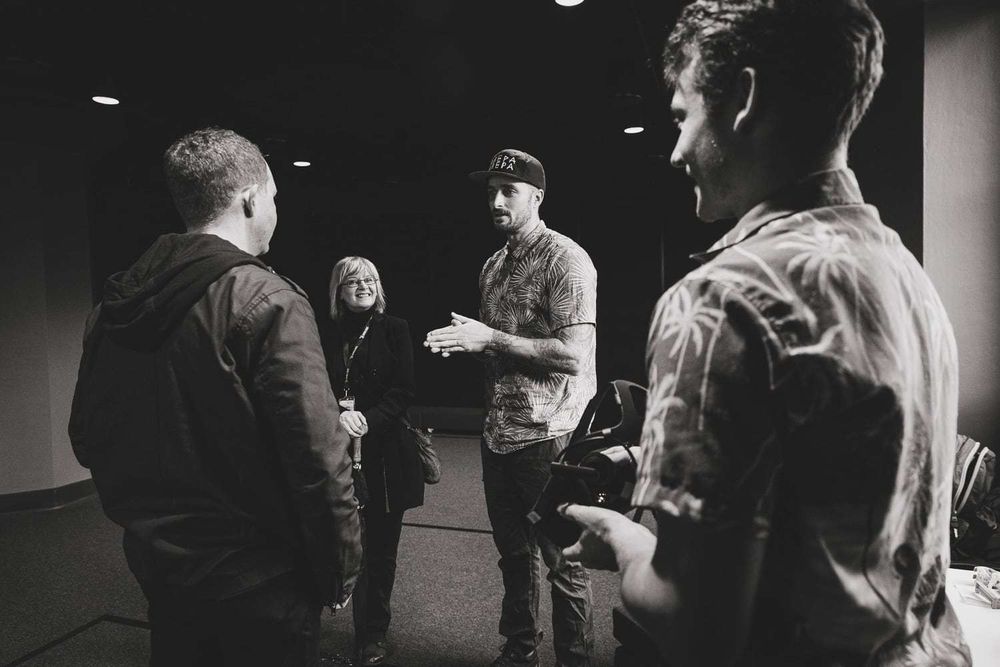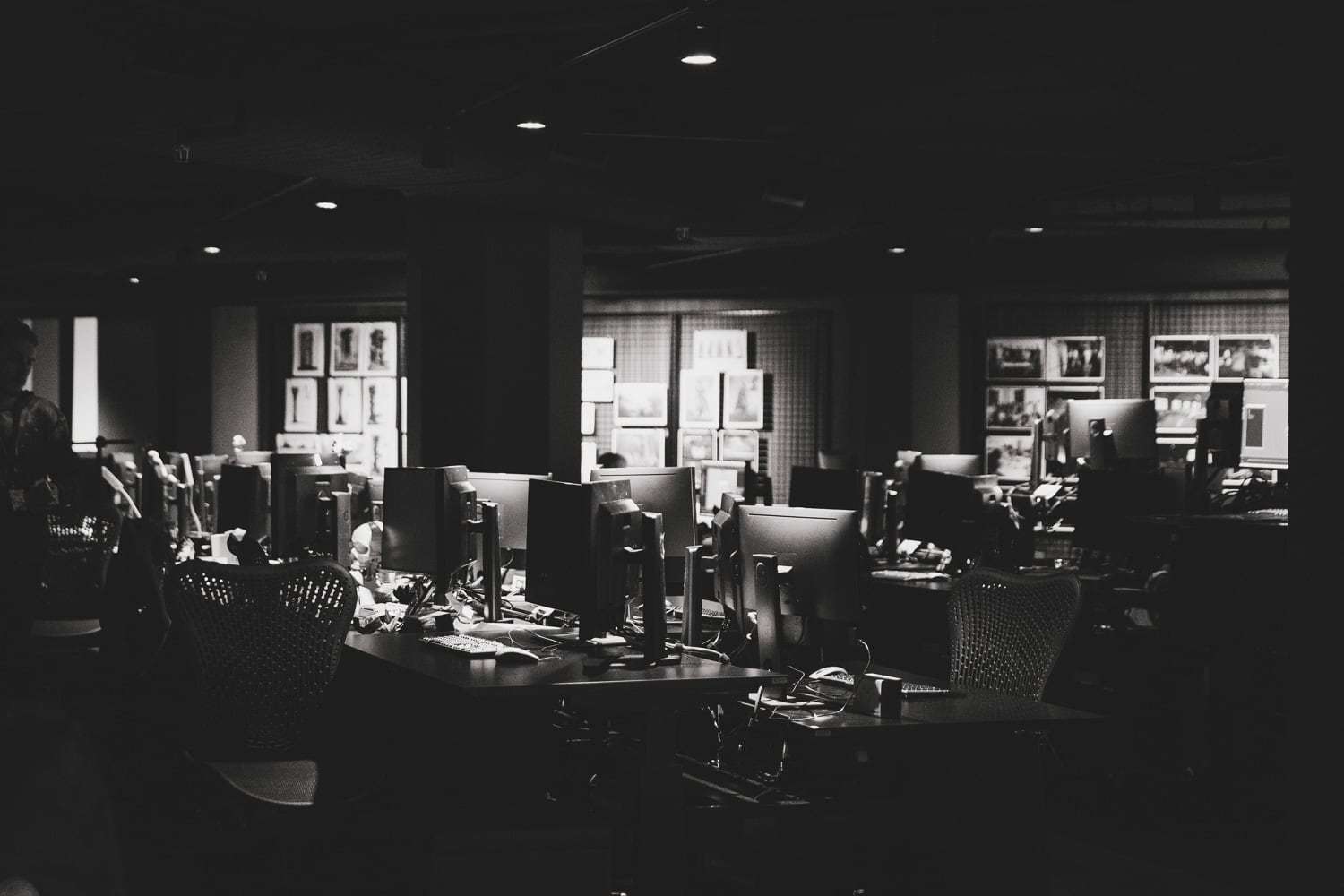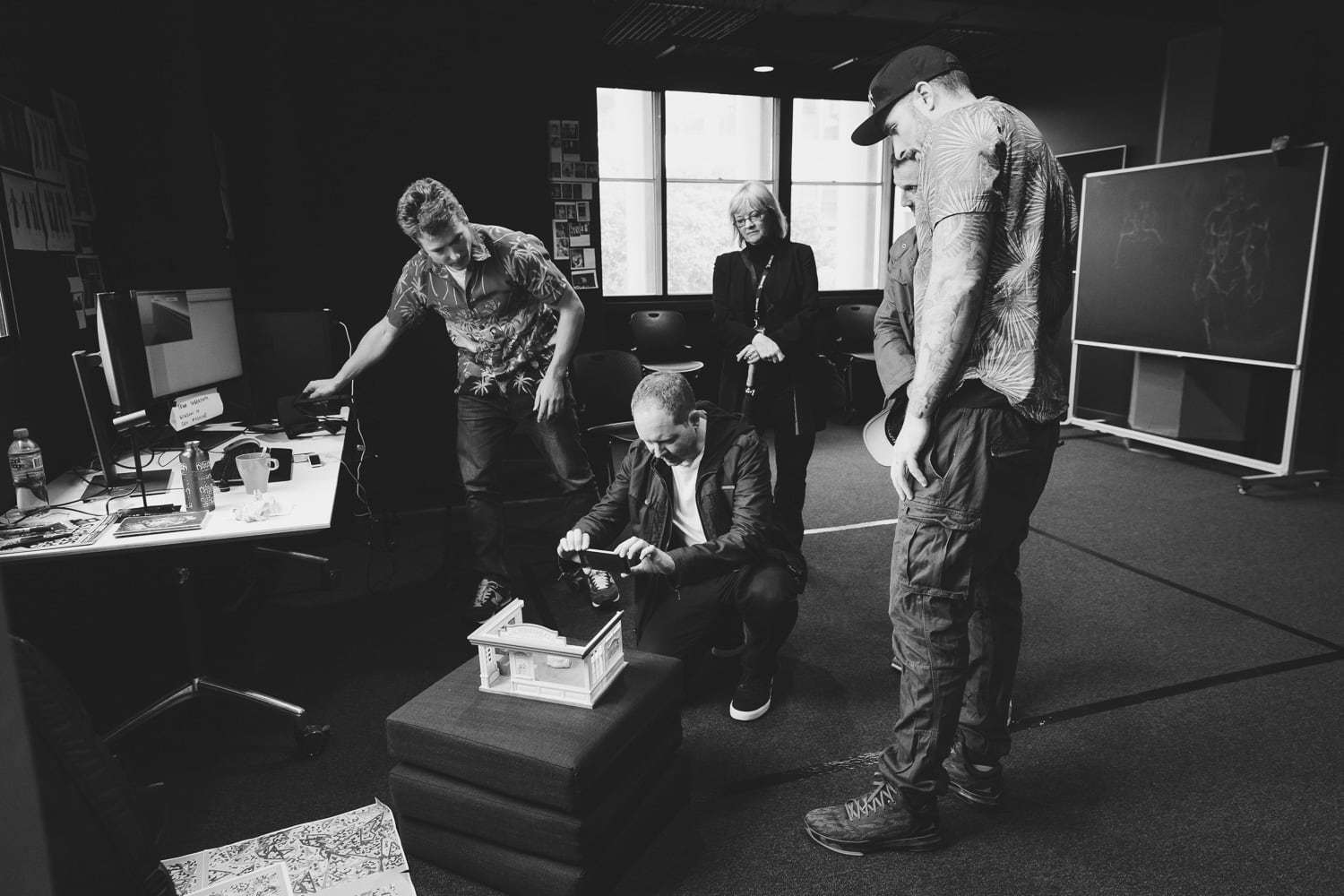
The University of Technology Sydney (UTS) and Animal Logic have joined forces to create the UTS Animal Logic Academy (UTS ALA), a professionally-equipped studio space engineered to the highest industry standards. The UTS ALA offers the first industry-led postgraduate degree of its kind in Australia – a Master of Animation and Visualisation (MAV) – and practice-based PhD research opportunities.
The Rookies caught up with Chris Ebeling who is the Creative Lead at UTS Animal Logic to find out what separates UTS ALA from the rest of the pack.
What is your background, how did you end up at UTS Animal Logic…
My background is Animation – Character and Creature – which I have been doing around the traps of Sydney, for almost a decade. I have worked at Animal Logic for the most part. I also worked as Animation Supervisor on VFX short films, independent video games, as Creative Director for Boutique Animation studio in Newtown, Pic4, where I helped create unique virtual reality, augmented reality experiences and unique commercial content for a range of media.
I also love teaching and ran an animation class at Enmore Design. While there I was fortunate to be included on the Curriculum Advisory Committee that helped design their successful Bachelor of 3D Art and Animation. Here I was introduced to Dr Shilo McClean, who is now the Head of the UTS Animal Logic Academy.
Having just come off the Lego Batman movie at Animal Logic I was invited to help create and lead the Master of Animation and Visualisation. When I heard about how they wanted to run the course and invent a new way of educating, I was immediately intrigued, and the rest is history.
What does a typical day as a Creative Lead look like?
Pretty much like any other studio that I have worked in. As the Creative Lead I wear many hats, not only do I help creatively steer the projects we develop, I outline and plan the production schedule as well as mentor and guide our crew, helping set the culture of our studio.
First thing I do in the morning is touch base with all of our artists. I like to do personal desk rounds, check in on their tasks for the day, see how they are and get a feel for their individual moods. We usually have our morning catch-up with the leadership, letting each other know what our individual plans and goals are for the day and/or week. We then have typical dailies sessions planned for the day/week, all depending on the amount of work that’s been done.
UTS Animal Logic has a studio feel than a school feel, tell us a little bit about the culture there and the importance of this distinctive difference?
We operate exactly like a real-world Studio. There are no lectures; there is no homework. And there aren’t any individual assignments/projects. We all work together on one Production, and like any studio, have our artists split across a range of disciplines. We work with the industry standard tools, hardware and software. We occasionally have master classes and support the work with industry mentors, all depending on our projects and crew’s needs.
Tell us about some of the tools you and the artists use on a daily basis.
For managing our projects, we use SHOTGUN, an industry standard task managing system, that is used in big commercial studios. We use Maya ( animation, rigging, modelling ), ZBrush (modelling, surfacing), Mari and Substance Painter and Designer (texturing, surfacing), Houdini (fx), Nuke (comp), and experimented using Clarisse as our Renderer and lighting tool as well as for layout. We also played with Speed Tree this year as our projects required a lot of trees. And used UNITY as our real-time engine. None of these choices excludes the use of any other software. Marvellous Designer was used for some character development, and we might use Arnold and Katana next year.
It all depends on what projects we come up with, and what tool suits us best. Of course we can’t have it all, as we have to design our pipeline specifically for our needs. Which is a separate challenge altogether. As far as hardware, we have state-of-the-art machines, which we boot Linux and Windows on.
This helps us juggle specific hardware that we use to create our projects for. For example, developing for VR and AR using UNITY, windows pro was a must. Speaking of VR and AR, we have a couple of Oculus, Vive and Microsoft HoloLens headsets, which we have been creating projects for. We also have access to a fully equipped motion capture studio, which has been invaluable for our projects this year.
There is a strong focus on future needs of the CG space at UTS Animal Logic, what excites you the most about this?
I love animation, visual effects for film and games as much as any other artist in this space, but the future is so much more than that.
With the emergence of VR and now AR, there is going to be a huge demand for visual artists and creators in this space. Not only for entertainment purposes but education, the medical sector, architecture, engineering and much MUCH more.
What excites me is that the visual aesthetics of any of these areas will need strong CG artists to help make these tools and experiences more appealing and that we are responding to this future need. I also love the fact that we can empower our users, not just with an entertaining escape, but give them access to information and knowledge in a visually appealing way and ultimately will be able to help better people’s lives with these creations.
Turn up on time, Deliver all your work, and don’t be a Dick.
The studio environment mirrors that of Animal Logic productions, can you tell us a little bit more about how your artists work on projects?
Our artists work like any commercial studio would. We split up into departments: Art/concept/design, previz/layout/animation, Assets/modelling/rigging/ surfacing/texturing, Lighting/FX/Matte painting/Compositing and also have our Pipeline/RnD/Technical Director team. We also have Editorial, where we bring it all together and final grade our project.
For Sound, we have managed to involve students from NSW Conservatorium of Music, to help us with our projects soundtracks. This gives them high-end visual effects work to create sound and Foley too, which is cool, as well as giving us unique polished soundscapes from likeminded creatives.
I wish I had that kind of support when I was starting out.
So we don’t mirror just Animal Logic’s way of working, but any commercial studio and depending on our pool of artists and skill, we will have them juggle a few different roles. For example and Animator would most likely help with previz and layout. A modeller would help with surfacing and texturing. We have had Art department crew help with comp.
It all depends on the artist’s want and skill in any of these disciplines. If you show you want to learn a new skill, and show aptitude in this area, we will give you shots and tasks within. In short, if Animal logic has the role in their studio, we look for it in ours… Yes, this means Software engineers, technical artists, as well as the creative artists.
You have a number of professionals drop in to talk and interact with the artists. Obviously apart from The Rookies crew, who else has been memorable highlights?
We love having industry visitors, and our doors are always open for our industry friends. Having worked a while in this industry, you quickly find out how small the animation and VFX community is, and how connected it is. So when someone is in town, I will always extend an invitation for them to come by and see the space, talk to the crew, see the awesome work they are doing, look over their work and offer feedback.
We have had Lego Batman Director Chris McKay share his stories, friends from Digital Domain, MPC and ILM drop in. Naturally, with our unique relationship with Animal Logic, we often have some of their supervisors visiting us, and we sometimes call on them to help us out with our projects. For example, we had Senior Compositor Kris Carsons come in for a few weeks, as well as FX Lead Matt Estella, to guide us with a few of our shots.
This, of course, is an incredible experience for our crew, to have someone from production, specialized in certain disciplinary areas look over their work. I wish I had that kind of support when I was starting out.
What skills and traits do you look for when interviewing applicants for your program?
We are looking for talent, potential and great attitude. We treat our application process like a job interview. Your portfolio will get you the interview, and from here your attitude usually gets you the offer.
Talent is always welcome. So if you have the goods, we want to see them!
We have a few sayings in our studio… “Talent is always welcome” and then the 3 rules… “Turn up on time, Deliver all your work, and don’t be a Dick”. It’s that simple. We don’t care about your ATAR score or your High Distinctions; we are looking for talented visual artists as well as software developers and applicants with computer science backgrounds that have the passion, attitude and want to be in this fun creative space.
You now have a Masters of Animation and Visualisation Degree. Who should apply for this course and why?
This course is designed for a number of people. Not only is it the next logical step for Bachelor students, wanting to take what they have learned and put it into practice, we also have people coming out of their professional careers, some leaving studios, to upskill and be a part of a very special creative process.
Maybe you are an IT person with an eye for animation, dabbled a bit on the side, but that banking job was so comfortable – well here is your chance to take that skill and put it to industry practice, which ultimately could lead you to your dream job with a game or film company.
Maybe you have gone as far as you can working for that small commercial studio, doing 30 sec TV spots and want to push your work to feature film level and be noticed by peers in this space. Maybe you have a computer science degree and want to be a part of something creatively challenging, working closely with artists helping them solve creative challenges with your technical prowess.
Anyone who has the desire to work on Feature films, games, VR, AR, Mixed reality, should get in touch. Of course, we set the bar high, as we are a Masters in Animation and Visualisation, but as we say, “Talent is always welcome”. So if you have the goods, we want to see them!
What are some important lessons that you’ve learned from being involved with UTS Animal Logic?
Me personally, I have learned so much. First off, as an Animator, I now know how much we animators complain.. haha… There is no satisfying an animator; it’s that simple haha..
Jokes aside, I have learned a lot. I have never had to manage a crew this size and considering the range of experience and in-experience and differences within a group this size, it’s been very challenging at times, as I come from working with experienced artists, who understand the terminology and process. Here it’s all about teaching the process.
The crew has the talent, that’s what got them here, our job is to get them all to work together as one mean lean visual effects machine. There is a lot of individuality that gets in the way, not only are they artists but people, with real-world problems. Like we all have. And as life does, it always gets in the way, so I have learned a lot about that… about the people.
Naturally its very gratifying to be in such a position. In a commercial studio, especially on small jobs, if someone isn’t pulling their weight, they usually are asked not to come back. Being an educational facility, we naturally have to operate much differently and being able to be there for my artists for whatever the reason has been very humbling and gratifying. In short, we get to run it like the “ideal world”, not necessarily the “real world”, which is super rewarding.
What’s one piece of advice you’d give to aspiring artists that want to get into the CG industry?
You have too enjoy the process.
I have a few quotes I always use, and while they are corny, they reign true… “Rome wasn’t built in a day” and “Picasso didn’t paint 9 to 5”.
You have to fall in love with the process and the grind. If it were easy, then anyone would do it, but, when you nail it, all the hard work pays off, and when you are working on your dream project, doing your dream job, well… it doesn’t feel like work because it isn’t… it’s your passion!
To find out more about UTS Animal Logic Academy: https://animallogicacademy.uts.edu.au/




